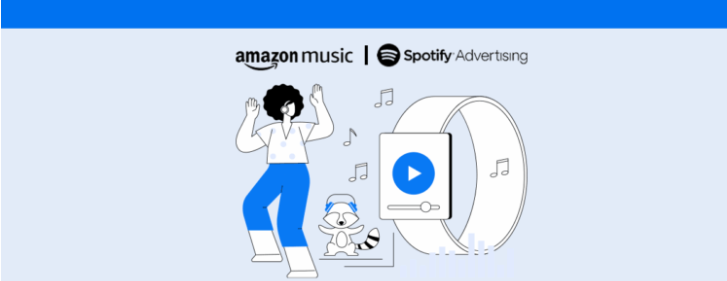Understand what the concept of zero feed on Instagram is, what advantages it offers, and when it makes sense to use this strategy.
The search for new strategies on social media is constant for brands that want to stand out amidst the competition. Therefore, on Instagram, an approach that has gained ground and generated discussions is zero feed.
Although it is a relatively recent trend, this practice has both staunch advocates and quite skeptical users regarding its effectiveness.
But after all, what exactly is zero feed and what are its impacts for brands that wish to invest in this strategy?
In this article, we will explore this trend in detail and analyze how it works, its main advantages, the risks involved, and in which situations it can be more effective. Follow along below.
What is the concept of zero feed on Instagram?
To begin with, it is essential to understand what the term “zero feed” means. In short, it refers to a specific strategy on Instagram where the profile keeps its feed completely empty without fixed posts..
This practice involves the constant deletion or archiving of posts to keep the feed visually clean and minimalist.
Thus, the intention becomes to generate curiosity and direct the audience exclusively to temporary content formats such as stories.
In this way, this approach has gained popularity in recent years, especially among Generation Z youth and brands seeking to stand out through visual and conceptual innovation.
This is because, instead of maintaining a permanent visual history, they opt for a profile that communicates exclusivity and temporariness focusing attention on short and instantaneous content.
How it works in practice and why some brands adopt it
In practice, zero feed on Instagram involves periodically deleting or archiving all posts made on the profile..
Thus, when the user visits the account, they find only the highlights pinned at the top and the active stories.
Some brands adopt this practice to strengthen a more modern and minimalist positioning, prioritizing a flow of communication that values the present moment.
Meanwhile, large companies, especially those linked to the fashion, beauty, entertainment, and technology markets, may adopt feed zero as a way to focus entirely on stories or reels, formats that have greater immediate engagement.
This allows the audience to always be in contact with more recent content that reinforces the sense of urgency and exclusivity.
In other words, the central idea is to keep the followers’ attention focused on ephemeral content, creating a more dynamic and interactive experience.
Finally, some brands may also use this strategy for specific campaigns, product launches, or special events, highlighting them exclusively in the stories.
Advantages of using zero feed on Instagram
That said, we can see that zero feed brings several benefits that can be quite attractive for brands that want to innovate their digital presence. Among the main ones are:
- Almost exclusive focus on stories , by directing followers to temporary content, the brand can create greater urgency and increase the view rate of stories, which usually have higher immediate engagement.
- Minimalist and innovative aesthetics the visual cleanliness of feed zero conveys an image of innovation, modernity, and sophistication, standing out among more traditional profiles.
- Generation of curiosity a vacant profile naturally awakens the curiosity of users, leading them to click on stories or highlights to better understand the content offered.
- Greater control over the message brands can quickly adjust their strategies without needing to keep old content that may be outdated or misaligned with their current message.
- Greater content flexibility , with focus solely on stories, there is the freedom to experiment with different formats without the need to maintain a permanent visual line on the feed.
In this way, these advantages make zero feed especially interesting for companies that wish to create a strong and contemporary image well-aligned with new digital consumption trends.
Risks and disadvantages of this strategy
But beware, despite the benefits, adopting zero feed might not be the best decision for all brands.
After all, there are some risks and disadvantages to be considered such as:
- Loss of visual history , by continuously deleting posts, the brand loses an important showcase of products, previous campaigns, and relevant moments, which makes it difficult to build a consistent narrative.
- Low impact on Instagram’s SEO , a vacant feed may harm the organic reach of the profile since fixed posts contribute to the overall performance in searches and recommendations within the platform.
- Impression of lack of content , some users may interpret the vacant feed as a lack of content or activity, which can harm the perception of the brand’s relevance and credibility.
- Lower long-term engagement , finally, the constant deletion of posts prevents new followers from exploring previous contents and interacting with old publications, which can affect the engagement on Instagram as a whole.
Therefore, these points should be carefully evaluated before adopting the strategy, especially if the brand aims to strengthen its digital presence consistently and durably.
When it makes sense to use zero feed
In conclusion, we can say that zero feed makes sense especially for brands that have a strong presence in stories or reels, and have an audience already accustomed to the consumption of more immediate content.
Thus, companies linked to the universe of fashion, events, entertainment, and more agile product dissemination can greatly benefit from this approach.
Another situation where zero feed is strategic is specific campaigns or launches.
In this context, temporarily cleaning the feed creates a sense of novelty and urgency, which generates expectation and interest around the launch.
Moreover, brands that wish to convey a very specific image, such as luxury, exclusivity, or minimalism, can use this approach to highlight their visual identity and positioning clearly and immediately.
However, it’s essential to assess whether the audience values this type of experience.
For more traditional segments or audiences that value more in-depth and consistent historical content, keeping the feed filled may be more advantageous.
Finally, before adopting zero feed, it is crucial to conduct tests, analyze metrics and audience behavior to ensure that this strategy is truly aligned with the brand’s goals and values, enhancing its communication and reach on Instagram.
In doubt whether the feed zero strategy is for you? Then take the opportunity to also read Instagram Feed: 12 Tips on How to Organize Your Company’s Feed.



